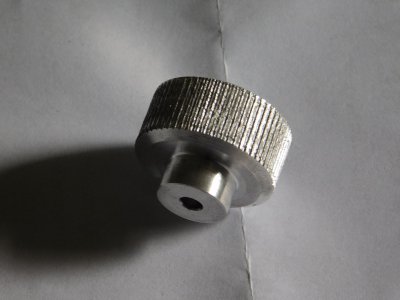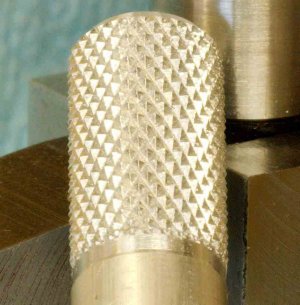- Joined
- Jul 4, 2014
- Messages
- 156
Guys
I attempted my first knurling operation. I measured the knurl pitch accurately by running on a paper and measuring the marks with caliper, etc. Made all related calculations for the desired diameter I must use before trying to plunge the knurl. And finally plunged the knurl in after setting the roller to be parallel to the piece mounted in the chuck and speed was set to the lowest available (130 rpm). The result was no good. Please see the picture below.
 Where did I go wrong?
Where did I go wrong?
Lathe used: G4000 by Grizzly, set at 130 rpm
Tool used: Straight single roller knurling tool,type H5936 from Grizzly. See below.

Thanks
Prasad
I attempted my first knurling operation. I measured the knurl pitch accurately by running on a paper and measuring the marks with caliper, etc. Made all related calculations for the desired diameter I must use before trying to plunge the knurl. And finally plunged the knurl in after setting the roller to be parallel to the piece mounted in the chuck and speed was set to the lowest available (130 rpm). The result was no good. Please see the picture below.
 Where did I go wrong?
Where did I go wrong? Lathe used: G4000 by Grizzly, set at 130 rpm
Tool used: Straight single roller knurling tool,type H5936 from Grizzly. See below.

Thanks
Prasad




